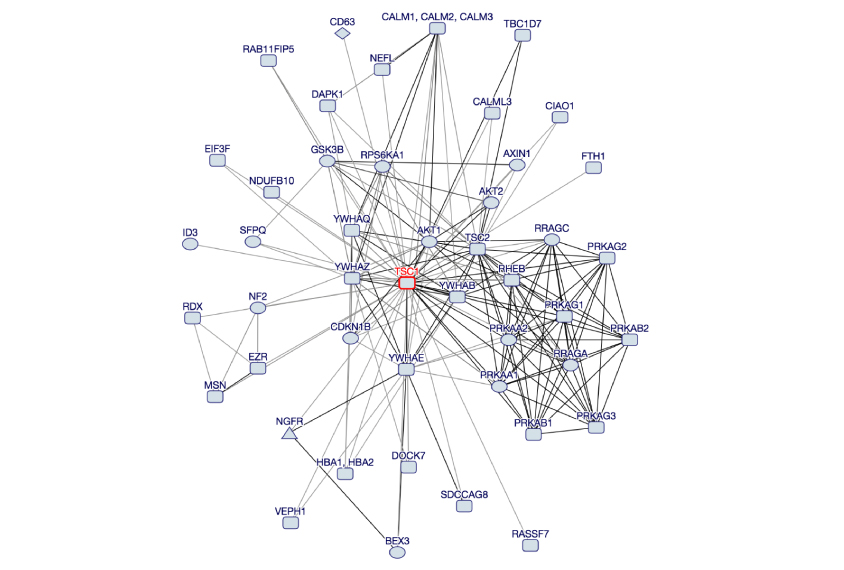
Online atlas reveals huge array of protein connections
A new web-based tool charts the myriad contacts among human proteins.
A new web-based atlas maps the myriad contacts among human proteins1. The tool contains twice as many connections as the next-largest resource, and could help scientists better understand the protein networks involved in autism.
Many proteins perform their functions with help from one or more partners. Mapping these interactions allows researchers to predict the effects of certain mutations. For instance, if a mutation blocks a protein’s ability to connect to its partner, it can affect the function of both proteins.
Researchers can identify a protein’s binding partners using a variety of techniques and species. The information is scattered among different databases, making it difficult to compare.
The new resource, described 28 November in Nature Methods, draws from eight databases containing data from about 68,000 research papers. It covers more than 625,000 protein interactions. The atlas holds close to three times as much brain-specific protein-interaction data as existing resources do.
More than half of the interactions in the atlas come from studies on human proteins. The rest are based on experiments in rats, mice, cows, worms, flies and yeast, but were only included if there was good reason to believe that the proteins involved also interact in people.
The researchers assigned each interaction a score based on the strength of evidence that the proteins work together in human tissue. Interactions scored higher if the proteins shared partners other than each other — a sign they belong to the same network. Using the resource, the researchers identified binding partners for 65 known autism-related proteins, reaffirming the networks they create.
The atlas is available online and includes a graphic user interface. The researchers plan to update it every three months.
References:
- Li T. et al. Nat. Methods 14, 61-64 (2016) PubMed
Recommended reading

Developmental delay patterns differ with diagnosis; and more

Split gene therapy delivers promise in mice modeling Dravet syndrome

Changes in autism scores across childhood differ between girls and boys
Explore more from The Transmitter

Smell studies often use unnaturally high odor concentrations, analysis reveals

‘Natural Neuroscience: Toward a Systems Neuroscience of Natural Behaviors,’ an excerpt
